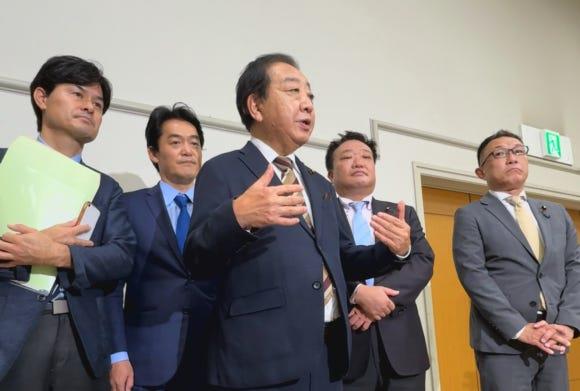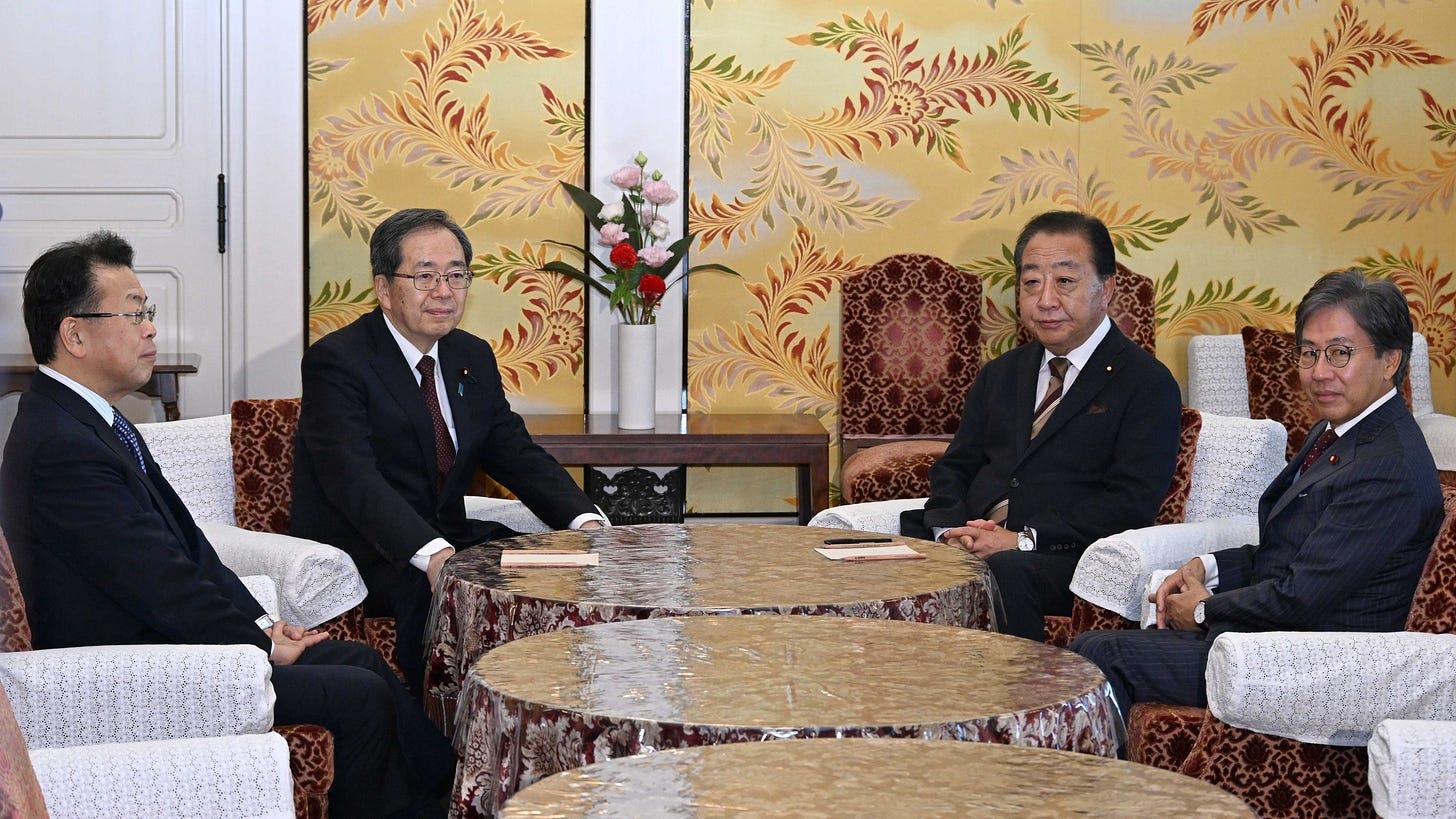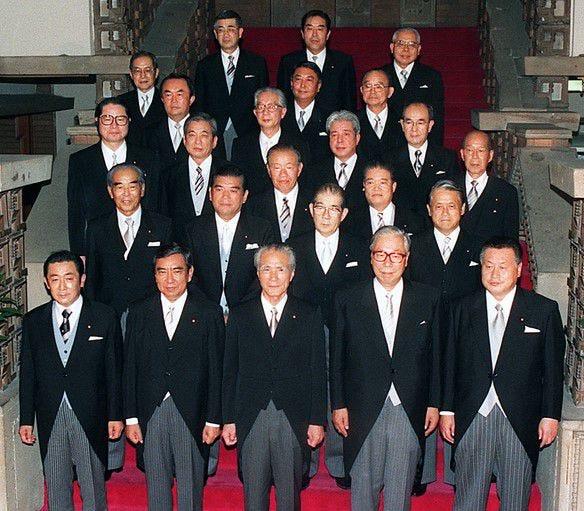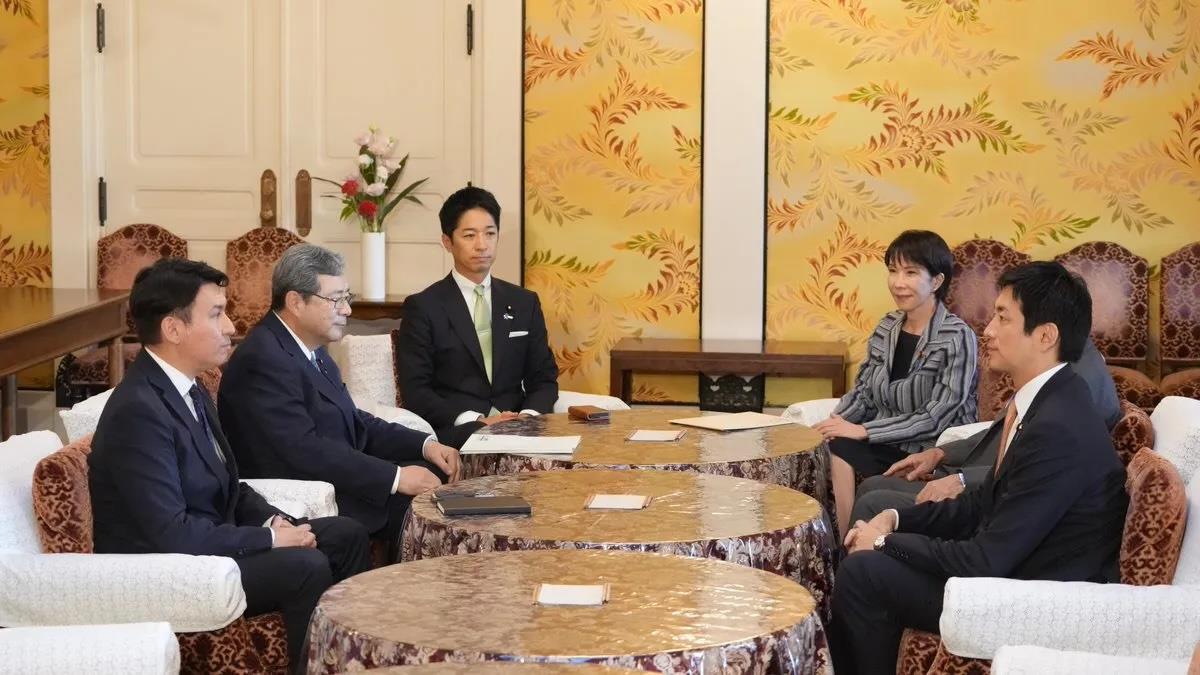
An LDP-Ishin Coalition Making Takaichi PM Is All But In The Bag
The negotiations have not been without friction. Ishin no Kai has had to accept that the LDP will not commit to reducing the consumption tax on foodstuffs to zero, a pledge from Ishin no Kai's upper house manifesto.
The party has also had to yield on its demand for a ban on corporate political donations, which would be virtually impossible for the LDP to accept after it parted ways with Komeito over the Buddhist party's more modest proposal for restricting political donations.
However, Ishin no Kai has instead demanded that the LDP accept its longstanding proposal for a 10% reduction in the number of Diet members and commit to moving it through the Diet during the forthcoming session. Of course, the party also expects that the LDP will support its plan for an“auxiliary capital” in the Kansai region and a proposal to reduce social insurance premiums.
The demand for the reduction in the number of legislators has been met with skepticism from within the LDP but was accepted by party leadership, though hammering out the details could be contentious.
Meanwhile, the LDP's Osaka chapter is anxious about the implications of a coalition with Ishin no Kai for its electoral fortunes, though there have been no details about whether and how the two parties will coordinate electorally. LDP Secretary-General Suzuki Shunichi sought to provide reassurance when he met with Rui Matsukawa, the acting head of the Osaka LDP on Friday.
Latest stories
Drone interceptors, priority for Europe, should be for Taiwan too

Trump administration should make 'Dig, baby, dig' its new motto

Netherlands mocked as 'pirate' after taking over China's Nexperia
Nevertheless, despite Ishin no Kai's misgivings – and its own leaders' warnings that a coalition could prove fatal to the party – there appears to be little standing in the way of the two parties concluding a coalition agreement before the Diet votes next week on the next prime minister. The parties are aiming to finalize an agreement on Monday, October 20.
Tamaki's leadership bid all but finished
CDP leader Noda Yoshihiko discussed the end of opposition talks to elect a non-LDP prime minister. Photo: CDP
In light of the progress in negotiations with the LDP, Ishin on Kai informed the Constitutional Democratic Party (CDP) and Democratic Party for the People (DPFP) that it would not be continuing negotiations with them regarding the possibility of electing the DPFP's Yuichiro Tamaki as prime minister instead of Takaichi. As a result, the CDP and DPFP will abandon efforts to coordinate. Instead, it appears that each party will back its own leader, ensuring a futile runoff between Takaichi and CDP leader Yoshihiko Noda.
Diet vote on trackAs a result of the aforementioned shifts, the CDP has accepted the inevitable and agreed to hold a vote for the premiership when the Diet opens for an extraordinary session on Tuesday, 21 October. The extraordinary session will run for fifty-eight days until 17 December.
Noda and Saito meet
CDP leader Noda and Komeito leader Tetsuo Saito meet on Friday, October 17. Photo: CDP
CDP leader Noda Yoshihiko and Komeito leader Tetsuo Saito met for the first time after Komeito decided to end its coalition with the LDP. The two leaders discussed cooperation on political finance reform and policies to counter inflation, and also expressed their opposition to the Ishin no Kai plan to slash the number of Diet members. Komeito in fact referred to the plan to reduce the number of lawmakers as a“declaration of war” against it and other parties.
Noda was particularly effusive about the possibility for partnership between the two parties, reflecting both the degree of policy alignment between the two parties and the potential electoral benefits for the CDP if the two parties are able to work together.
Murayama Tomiichi dies at 101
The Murayama cabinet in 1995. Prime Minister Murayama is in the first row, center. Future prime ministers Ryutaro Hashimoto and Yoshiro Mori are at the far left and far right ends of the first row respectively. Yohei Kono, deputy prime minister and foreign minister, is second from the left. Photo: Wikimedia Commons
Tomiichi Murayama, the Socialist Party leader who was elevated to the premiership at the head of an awkward coalition with the LDP and the New Party Sakigake in 1994, passed away on Friday at the age of 101. It is perhaps a fitting moment to remember Murayama, who headed an unlikely but consequential government.
Japan faces a period of instability and fluidity much like the moment that led to Murayama's premiership, with the LDP without a parliamentary majority after major corruption scandals, coalitions breaking and forming, and the public unsure of what to make of it all.
Meanwhile, Murayama's premiership was perhaps the last time Japan had a politically relevant left-wing opposition, as the political center of gravity has shifted steadily rightward over the past three decades – and his Socialist Party's willingness to compromise long-held positions on the Self-Defense Forces (SDF) and the US-Japan alliance to hold power with the LDP hastened its slide to irrelevance. Naturally this display of realism by Murayama has been praised by current LDP leaders, including both Prime Minister Shigeru Ishiba and Takaichi.

Sign up for one of our free newsletters
-
The Daily Report
Start your day right with Asia Times' top stories
AT Weekly Report
A weekly roundup of Asia Times' most-read stories
I discussed the right wing's response to the formation of the Murayama government in my book The Iconoclast. Not only did his premiership undermine the left, it also unintentionally contributed to the rise of the nascent new conservative movement in the LDP, both by
-
fueling conservatives' anger at the LDP's old guard for its willingness to make compromises, such as the one that brought Murayama to power, and by
giving them a new target to mobilize against: Murayama's 1995 statement apologizing for Japan's aggression during World War II.
The Chinese and South Korean governments have offered their condolences in appreciation for the Murayama Statement.
As Shinzo Abe wrote about this moment in his 2006 book,“By making the leader of a party with public approval of only five or six percent prime minister, naturally the dissatisfaction within the party [the LDP] was amplified. The opposition was especially large from people who had become representatives who approved of the LDP's ideas, who, if I had to say, belonged to the conservative mainstream.”
After retiring in 2000, Murayama was occasionally active in politics even as his former party, now the Social Democratic Party of Japan, saw its seats total dwindle. He was the second-longest-lived former prime minister after Naruhiko Higashikuni.
Longtime Japan politics and policymaking analyst Tobias Harris heads Japan Foresight LLC.
This article was originally published on his Substack newsletter Observing Japan.
Sign up here to comment on Asia Times stories Or Sign in to an existing accounThank you for registering!
An account was already registered with this email. Please check your inbox for an authentication link.
-
Click to share on X (Opens in new window)
Click to share on LinkedIn (Opens in new window)
LinkedI
Click to share on Facebook (Opens in new window)
Faceboo
Click to share on WhatsApp (Opens in new window)
WhatsAp
Click to share on Reddit (Opens in new window)
Reddi
Click to email a link to a friend (Opens in new window)
Emai
Click to print (Opens in new window)
Prin

Legal Disclaimer:
MENAFN provides the
information “as is” without warranty of any kind. We do not accept
any responsibility or liability for the accuracy, content, images,
videos, licenses, completeness, legality, or reliability of the information
contained in this article. If you have any complaints or copyright
issues related to this article, kindly contact the provider above.
Most popular stories
Market Research

- Solo Leveling Levels Up: Korean Billion-Dollar Megafranchise Goes Onchain With Story
- Freedom Holding Corp. (FRHC) Shares Included In The Motley Fool's TMF Moneyball Portfolio
- From Tracking To Thinking: Edgen's“Smart Portfolio” Brings Portfolio-Native Multi-Agent Reasoning To Asset Portfolios
- Cregis At FOREX Expo 2025: Connecting Forex With Crypto Payment
- Currency Relaunches Under New Leadership, Highlights 2025 Achievements
- Cregis At TOKEN2049 Singapore 2025: Unlocking The Next Frontier Of Adoption




















Comments
No comment